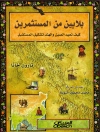The uneven geographical distribution of economic activities is a huge challenge worldwide and also for the European Union. In Krugman’s New Economic Geography economic systems have a simple spatial structure. This book shows that more sophisticated models should visualise the EU as an evolving trade network with a specific topology and different aggregation levels. At the highest level, economic geography models give a bird eye’s view of spatial dynamics. At a medium level, institutions shape the economy and the structure of (financial and labour) markets. At the lowest level, individual decisions interact with the economic, social and institutional environment; the focus is on firms’ decision on location and innovation. Such multilevel models exhibit complex dynamic patterns – path dependence, cumulative causation, hysteresis – on a network structure; and specific analytic tools are necessary for studying strategic interaction, heterogeneity and nonlinearities.
Jadual kandungan
Introduction.- Part A. Economic Geography Modelling.- Part B. Institutions and Markets.- Part C. Industrial Interactions.












